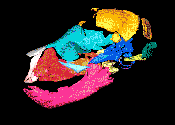Newly described species have higher extinction risk
Newly discovered species are at a higher risk of extinction than those first described long ago, according to a new study involving researchers at The Australian National University (ANU).

Newly discovered species are at a higher risk of extinction than those first described long ago, according to a new study involving researchers at The Australian National University (ANU).
Plants & Animals
Mar 10, 2022
2
633

The high-contrast pattern of giant pandas helps them blend in with their natural environment.
Plants & Animals
Oct 28, 2021
0
106

In the ongoing quest to understand what makes a good wildlife habitat, surprising new research shows there may be too much of a good thing when it comes to pinpointing optimal conditions. Embracing somewhat reduced standards ...
Plants & Animals
Sep 20, 2021
0
107

A team of researchers at the Chinese Academy of Sciences working with the Beijing Zoo, has found a possible explanation for horse manure rolling (HMR) by giant pandas. In their paper published in Proceedings of the National ...

Before China declared giant pandas a protected species in 1962—hunters in pursuit of the black and white bear used dogs to track them. Since then measures have been put in place to protect the vulnerable pandas, but more ...
Plants & Animals
Aug 18, 2020
0
83

It may be one of the most recognisable symbols of conservation, but efforts to protect the giant panda have failed to safeguard large mammals sharing its habitats, according to research published Monday showing dramatic declines ...
Plants & Animals
Aug 3, 2020
0
3261

Born pink, blind, and helpless, giant pandas typically weigh about 100 grams at birth—the equivalent of a stick of butter. Their mothers are 900 times more massive than that.
Plants & Animals
Dec 13, 2019
0
176

New research has revealed that Australia's extinct short-faced kangaroos were a marsupial version of the giant panda, with jaws adapted to browsing woody, poor-quality vegetation.
Archaeology
Sep 11, 2019
0
206

Seven months after Huang Yu's pet cat Garlic died, the British shorthair was given a 10th life.
Plants & Animals
Sep 5, 2019
33
912

People can tell how other people are feeling by the sounds they make and now, new research from the University of Alberta shows that may also apply to different animals.
Plants & Animals
Jul 11, 2019
0
78